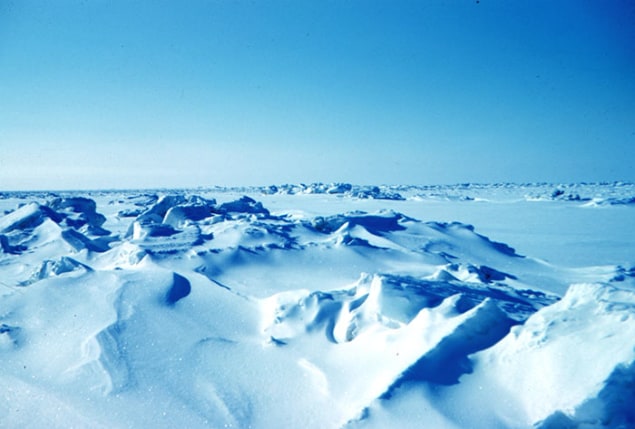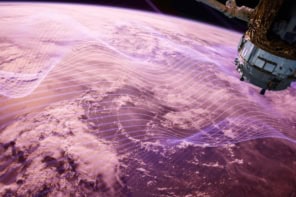
The Arctic environment has reached a “new normal”, characterized by thinner sea ice covering less of the surface area, shorter and less extensive winter snow cover, less ice mass in Greenland and Arctic glaciers, and warmer sea surface and permafrost temperatures. That conclusion represents the work of 85 scientists from 12 countries who prepared the 12th annual Arctic Report Card for the US National Oceanic and Atmospheric Administration (NOAA). It was released at the annual meeting of the American Geophysical Union (AGU) in New Orleans in December.
Jeremy Mathis of NOAA told reporters at AGU that changes in the Arctic affect not only that region, but “will impact all of our lives”. They will result in more extreme weather events, higher food prices and climate refugees. Although there were fewer weather anomalies in the Arctic in 2017, compared with the record-breaking warming of 2016, he said, “the Arctic shows no signs of returning to the reliably frozen state it was in just a decade ago”.
Arctic temperatures continue to rise at double the rate of the rest of the planet, NOAA reports. For the year ending September 2017, the average Arctic surface air temperature was the second warmest since 1900, after 2016.
Specifically, reported NOAA’s Emily Osborne at AGU, the average Arctic air temperature was 1.6o C above the long-term average from 1981 to 2010. The record summer temperatures of 2016 were followed by the lowest recorded winter sea ice maximum since satellite observations began in 1979, she said. The cooler summer of 2017 resulted in the minimum sea ice cover being ranked eighth lowest on record, she explained, adding that 10 of the lowest observed sea ice minima occurred in the past 11 years.
The remaining sea ice is much younger, more fragile and more prone to melting than in the past, Osborne noted. The report card says that only 21% of the 2017 ice cover was older than one year, and so thicker. In 1985 this figure was 45%. More exposed seawater means more absorption of radiant energy from the Sun, leading to warmer water, and additional melting of the remaining ice.
The August 2017 sea surface temperatures in the Barents and Chukchi Seas were as much as 4o C warmer than average, NOAA reported. The higher temperatures contributed to a delayed freeze-up in those regions in the autumn.
Turning to land, Vladimir Romanovsky of the University of Alaska Fairbanks reported at AGU that the Eurasian Arctic experienced above-average snow cover in 2017, while North America’s Arctic had less than average snow cover and earlier snow melt, continuing a trend of 11 of the past 12 years. The Greenland ice sheet has been measured since 2002, he said. It experienced less melting than average in 2017, compared with the previous nine years, but remains nevertheless a major contributor to sea level rise.
The Arctic Report Card covers many additional topics, including fisheries, wildfires, greening of the tundra and primary productivity (at the base of the marine food web).



